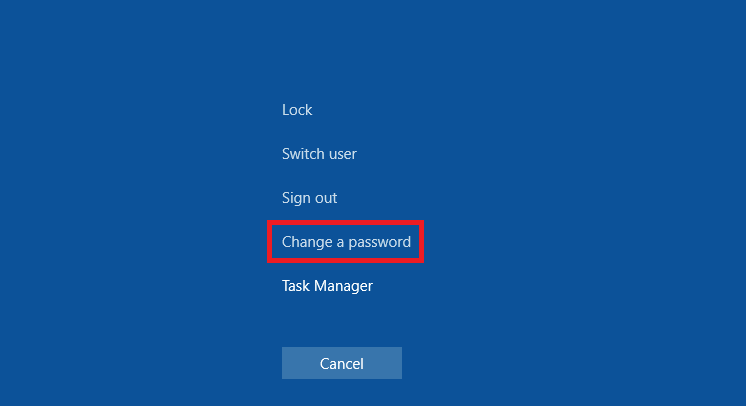Empowering Security: A Comprehensive Guide on How to Change Your Password in Windows 10

Introduction
Securing your digital environment is paramount in the interconnected world we live in, and a crucial aspect of personal cybersecurity is regularly updating and changing your passwords. In Windows 10, Microsoft provides users with a straightforward process to change their passwords, ensuring the safety of their accounts and data. This comprehensive guide walks you through various methods to change your password in Windows 10, catering to different user preferences and scenarios.
Section 1: Why Change Your Password?
1.1 Importance of Regular Password Changes
- Security Enhancement: Changing your password regularly helps safeguard your accounts from unauthorized access, especially if you use shared computers or devices.
- Compliance: In some organizations or industries, regular password changes are a requirement to comply with security policies and regulations.
- Risk Mitigation: If you suspect that your password may have been compromised or if you’ve shared it inadvertently, changing it promptly reduces the risk of unauthorized access.
Section 2: Changing Your Password via Settings
2.1 Overview
Windows 10 provides a user-friendly interface for changing your password through the Settings menu.
2.2 Steps to Change Your Password via Settings
- Open Settings: Click on the Start menu, select “Settings” (gear icon), or press
Windows key + Ito open Settings directly. - Navigate to Accounts: In the Settings menu, select “Accounts.”
- Access Sign-in Options: Click on “Sign-in options” in the left pane.
- Change Password: Under the “Password” section, click on “Change” to initiate the password change process.
- Verification: You may be prompted to verify your identity through methods like entering your current password, receiving a security code via email or text, or answering security questions.
- Create New Password: Enter and confirm your new password, ensuring it meets the specified security requirements.
- Complete the Process: Follow any additional prompts to finalize the password change. Once completed, your new password is in effect.
Section 3: Changing Your Password via CTRL + ALT + DEL
3.1 Overview
Another method to change your password involves using the CTRL + ALT + DEL keyboard shortcut.
3.2 Steps to Change Your Password via CTRL + ALT + DEL
- Press CTRL + ALT + DEL: Simultaneously press the CTRL, ALT, and DEL keys on your keyboard.
- Select “Change a password”: From the options that appear, select “Change a password.”
- Enter Current Password: Input your current password when prompted.
- Set New Password: Enter and confirm your new password, adhering to any specified security requirements.
- Update Complete: Once confirmed, your password is successfully changed.
Section 4: Changing Your Password Using Command Prompt
4.1 Overview
For users comfortable with the command line, Windows 10 allows you to change your password using Command Prompt.
4.2 Steps to Change Your Password Using Command Prompt
- Open Command Prompt: Press
Windows key + Xand choose “Command Prompt (Admin)” or “Windows PowerShell (Admin).” - Enter Command: Type the following command and press Enter:bash
net user [username] *
Replace “[username]” with your actual Windows username.
- Enter Current Password: You’ll be prompted to enter your current password.
- Set New Password: After entering your current password, you can type and confirm your new password. Press Enter to complete the process.
- Confirmation: The Command Prompt will confirm that the command was completed successfully.
Section 5: Changing Your Password Using Local Users and Groups
5.1 Overview
Windows 10 provides an alternative method using the Local Users and Groups interface for changing passwords.
5.2 Steps to Change Your Password Using Local Users and Groups
- Open Local Users and Groups: Press
Windows key + Rto open the Run dialog, type “lusrmgr.msc,” and press Enter. - Navigate to Users: In the Local Users and Groups window, go to “Users” in the left pane.
- Select User: Locate and right-click on the user account for which you want to change the password.
- Choose “Set Password”: From the context menu, select “Set Password.”
- Enter New Password: Enter and confirm the new password in the respective fields.
- Complete Process: Click “OK” to confirm the password change.
Section 6: Changing Your Password on a Domain Network
6.1 Overview
For users on a domain network, the process of changing the password involves contacting your network administrator or using the Ctrl + Alt + Del method.
6.2 Steps to Change Your Password on a Domain Network
- Ctrl + Alt + Del: Use the Ctrl + Alt + Del method and select “Change a password.”
- Contact Network Administrator: If you’re part of a domain network, contact your network administrator for guidance on changing your password.
Section 7: Best Practices for Strong Passwords
7.1 Password Strength
- Complexity: Create passwords that are a mix of uppercase and lowercase letters, numbers, and special characters.
- Length: Longer passwords are generally more secure. Aim for a minimum of 12 characters.
- Unpredictability: Avoid easily guessable information such as birthdays, names, or common words.
7.2 Password Management
- Use a Password Manager: Consider using a reputable password manager to generate, store, and manage complex passwords securely.
- Avoid Password Reuse: Refrain from using the same password across multiple accounts to prevent a security breach if one account is compromised.
Section 8: Conclusion
Changing your password in Windows 10 is a fundamental aspect of maintaining a secure and resilient digital environment. Whether you prefer the user-friendly Settings menu, the CTRL + ALT + DEL method, Command Prompt, or Local Users and Groups, this comprehensive guide has covered diverse methods to accommodate various user preferences and scenarios. Regularly updating your password, adhering to best practices for password strength, and considering the use of a password manager are essential steps in fortifying your online security. Empower yourself by integrating these practices into your routine, ensuring a robust defense against potential threats and unauthorized access.




